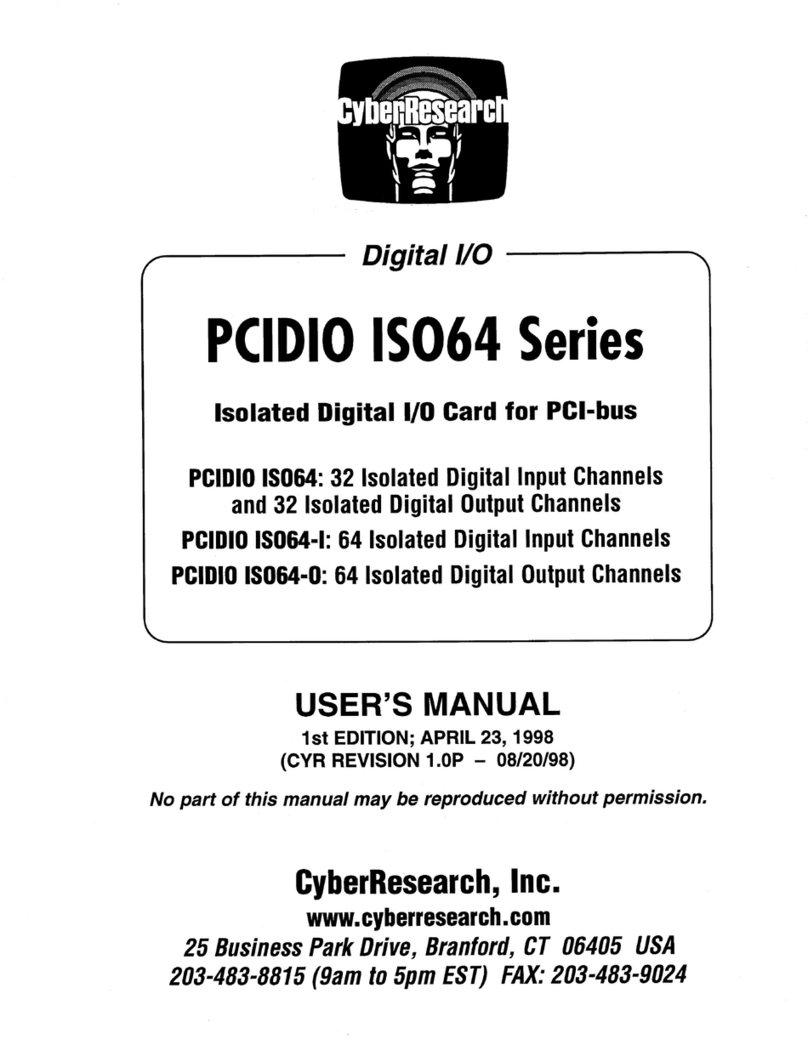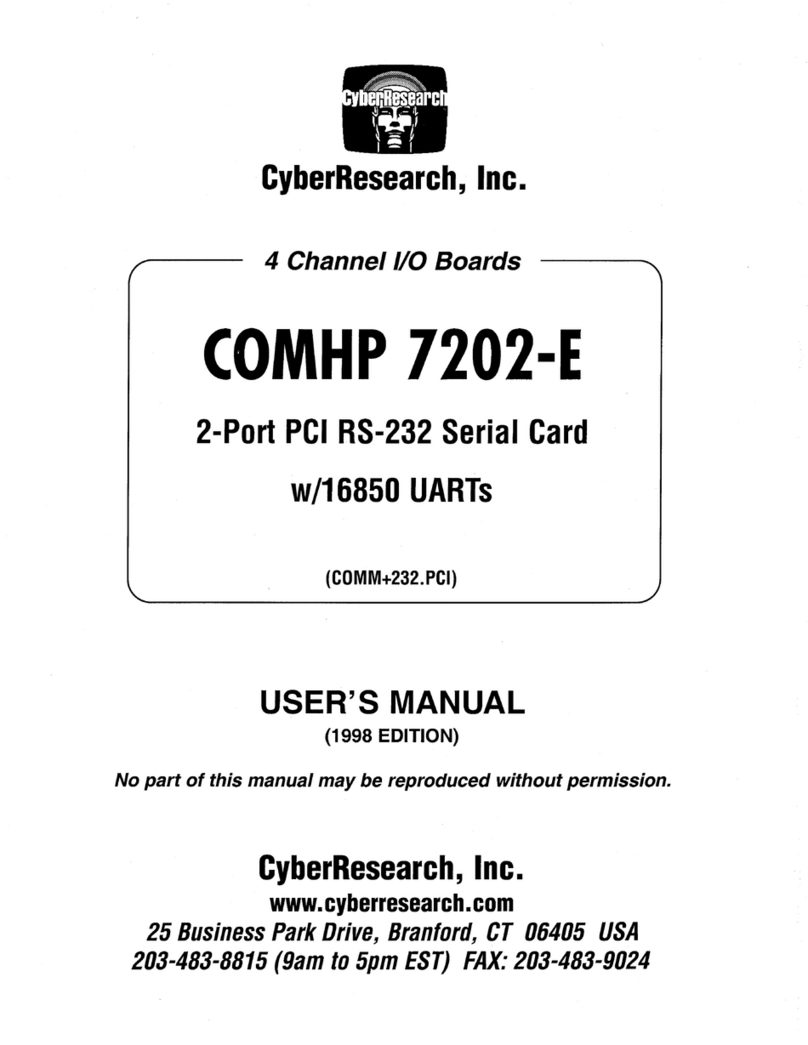
CyberResearch® Serial Communications COMHP 7404/-D25
CyberResearch, Inc. v
25 Business Park Drive P: (203) 643-5000; F: (203) 643-5001
Branford, CT USA www.cyberresearch.com
Table of Contents
INTRODUCTION............................................................................................................................................1
OVERVIEW .....................................................................................................................................................................1
WHAT’S INCLUDED ........................................................................................................................................................1
FACTORY DEFAULT SETTINGS........................................................................................................................................1
CARD SETUP ................................................................................................................................................2
RS-485 ENABLE MODES ................................................................................................................................................2
Interface Mode Examples SW1 – SW4 (continued) ..................................................................................................4
ADDRESS AND IRQ SELECTION ......................................................................................................................................4
ELECTRICAL INTERFACE SELECTION..............................................................................................................................5
CLOCK MODES...............................................................................................................................................................6
BAUD RATES AND DIVISORS FOR THE ‘DIV1’ MODE......................................................................................................6
INSTALLATION.............................................................................................................................................7
OPERATING SYSTEM INSTALLATION ..............................................................................................................................7
For Windows Users....................................................................................................................................................7
Other Operating Systems............................................................................................................................................7
SYSTEM INSTALLATION..................................................................................................................................................7
TECHNICAL DESCRIPTION...........................................................................................................................8
CONNECTOR PIN ASSIGNMENTS.....................................................................................................................................8
RS-422/485 (DB 9 Male)........................................................................................................................................8
RS-232 (DB-9 Male) ..............................................................................................................................................8
CONNECTOR PIN ASSIGNMENTS.....................................................................................................................................9
RS-232, RS-422/485 (DB-37 Male).......................................................................................................................9
SPECIFICATIONS ........................................................................................................................................10
ENVIRONMENTAL SPECIFICATIONS...............................................................................................................................10
MANUFACTURING ........................................................................................................................................................10
POWER CONSUMPTION .................................................................................................................................................10
MEAN TIME BETWEEN FAILURES (MTBF)...................................................................................................................10
PHYSICAL DIMENSIONS................................................................................................................................................10
APPENDIX A-TROUBLESHOOTING...........................................................................................................11
APPENDIX B-ELECTRICAL INTERFACE...................................................................................................12
RS-232.........................................................................................................................................................................12
RS-422.........................................................................................................................................................................12
RS-485.........................................................................................................................................................................13
APPENDIX C- ASYNCHRONOUS COMMUNICATIONS.................................................................................14
APPENDIX D-SILK-SCREEN .....................................................................................................................15
APPENDIX E-COMPLIANCE NOTICES......................................................................................................16
FEDERAL COMMUNICATIONS COMMISSION STATEMENT..............................................................................................16
EMC DIRECTIVE STATEMENT ......................................................................................................................................16






























